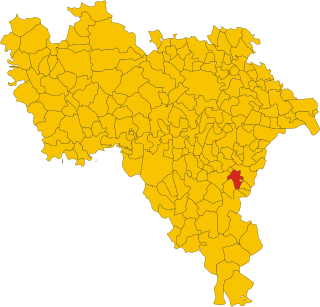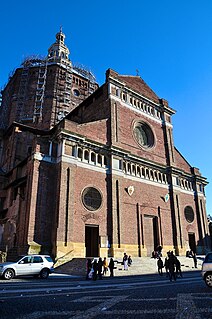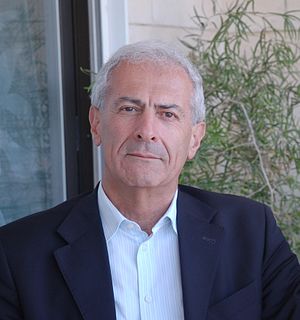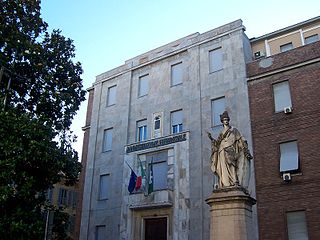History
In the Middle Ages Zeme was described as Cemide or Zemide. Since the tenth century Zeme belonged to the Bishop of Pavia and later to the priory of the Holy Cross of Mortara; in 1311 one half of the territory was confirmed as belonging to the Count palatine of Lomello. Zeme is named in imperial diplomas (1191, 1220) that assign the Lomellina to Pavia.

In the history of Europe, the Middle Ages lasted from the 5th to the 15th century. It began with the fall of the Western Roman Empire and merged into the Renaissance and the Age of Discovery. The Middle Ages is the middle period of the three traditional divisions of Western history: classical antiquity, the medieval period, and the modern period. The medieval period is itself subdivided into the Early, High, and Late Middle Ages.

Mortara is a town and comune in the region of Lombardy, Italy. It lies between the Agogna and Terdoppio rivers, in the historical district known as Lomellina, a rice-growing agricultural center. It received the honorary title of city with a royal decree in 1706.
Count palatine is a high noble title, used to render several comital styles, in some cases also shortened to Palatine, which can have other meanings as well.
During the Visconti period it came under the power of Filippino, son of Facino Cane, who in 1524 sold it to condottiero Angelo della Pergola (lord also of Sartirana). In 1528 his great-nephew Francesco della Pergola sold Zeme to the San Cassiano family, but in 1532 Zeme was assigned to the Chapter (religion) and the Bishopric of Vigevano. The domain of the Bishopric ceased only with the abolition of feudalism (1771). [1]

Facino Cane da Casale, born Bonifacio Cane, was an Italian condottiero.

Sartirana Lomellina is a comune (municipality) in the Province of Pavia in the Italian region Lombardy, located about 60 km southwest of Milan and about 40 km west of Pavia. As of 31 December 2004, it had a population of 1,837 and an area of 29.5 km².

A chapter is one of several bodies of clergy in Roman Catholic, Anglican, and Nordic Lutheran churches or their gatherings.
In 1818 Zeme was finally united with Marza and Sant'Alessandro, once comuni, now consisting of simple farms. [2]
This page is based on this
Wikipedia article Text is available under the
CC BY-SA 4.0 license; additional terms may apply.
Images, videos and audio are available under their respective licenses.

Lombard is a language belonging to the Cisalpine or Gallo-Italic group, within the Romance languages. It is a cluster of homogeneous varieties used by at least 3,500,000 native speakers in Northern Italy, Southern Switzerland, and Brazil. The languages closest to Lombard are Franco-Provençal, French, Romansh, and Occitan.

The Teatro della Pergola is a historic opera house in Florence, Italy. It is located in the centre of the city on the Via della Pergola, from which the theatre takes its name. It was built in 1656 under the patronage of Cardinal Gian Carlo de' Medici to designs by the architect Ferdinando Tacca, son of the sculptor Pietro Tacca; its inaugural production was the opera buffa, Il potestà di Colognole by Jacopo Melani. The opera house, the first to be built with superposed tiers of boxes rather than raked semi-circular seating in the Roman fashion, is considered to be the oldest in Italy, having occupied the same site for more than 350 years.

Casteggio is a comune (municipality) in the Province of Pavia in the Italian region Lombardy, located about 61 km south of Milan and about 25 km south of Pavia. As of 31 July 2010, it had a population of 6,537 and an area of 17.8 km².

Castello d'Agogna is a small town and comune (municipality) in the Province of Pavia in the Italian region Lombardy, located about 45 km southwest of Milan and about 35 km west of Pavia. It is crossed by the Agogna river.

Cozzo is a comune (municipality) in the Province of Pavia in the Italian region Lombardy, located about 50 km southwest of Milan and about 40 km west of Pavia. As of 31 December 2004, it had a population of 421 and an area of 17.4 km².

Lirio is a comune (municipality) in the Province of Pavia in the Italian region Lombardy, located about 50 km south of Milan and about 20 km southeast of Pavia. As of 31 December 2004, it had a population of 153 and an area of 1.7 km².

Montebello della Battaglia is a comune (municipality) in the Province of Pavia in the Italian region Lombardy, located about 50 km south of Milan and about 20 km south of Pavia.

Montecalvo Versiggia is a comune (municipality) in the Province of Pavia in the Italian region Lombardy, located about 60 kilometres (37 mi) south of Milan and about 25 kilometres (16 mi) southeast of Pavia.

Santa Maria della Versa is a comune (municipality) in the Province of Pavia in the Italian region Lombardy, located about 50 km south of Milan and about 25 km southeast of Pavia.

Sant'Angelo Lomellina is a comune (municipality) in the Province of Pavia in the Italian region Lombardy, located about 45 km southwest of Milan and about 35 km west of Pavia. As of 31 December 2004, it had a population of 821 and an area of 10.4 km².

Valle Lomellina is a comune (municipality) in the Province of Pavia in the Italian region Lombardy, located about 50 km southwest of Milan and about 40 km west of Pavia. As of 31 December 2004, it had a population of 2,224 and an area of 27.1 km².

Velezzo Lomellina is a comune (municipality) in the Province of Pavia in the Italian region Lombardy, located about 50 km southwest of Milan and about 35 km west of Pavia. As of 31 December 2004, it had a population of 113 and an area of 8.6 km².

Pergola is a comune (municipality) in the Province of Pesaro e Urbino in the Italian region Marche.
The Gilt Bronzes of Cartoceto di Pergola were discovered in the communal territory in 1946. They are now exposed in a specific museum at Pergola.

The Diocese of Pavia is a see of the Catholic Church in Italy. It has been a suffragan of the Archdiocese of Milan only since 1817. Previous to the reorganization of the hierarchy in northern Italy by Pope Pius VII after the expulsion of the French and the Congress of Vienna, the diocese of Pavia had depended directly upon the Holy See, despite repeated failed attempts on the part of the Archbishops of Milan to claim control. The diocese has produced one Pope and Patriarch of Venice, and three cardinals.

Sergio Della Pergola is an Italian-born Israeli demographer and statistician. He is a professor and demographic expert, specifically in demography and statistics related to the Jewish population.

Karl Kajetan von Gaisruck was an Austrian Cardinal and the archbishop of Milan from 1816 to 1846. He also held the title of Graf or Count.
Nicoletto Vernia was an Italian Averroist philosopher, at the University of Padua.
There are about thirty theatres in Florence, Italy, and range from historic theatres, to national and municipal music halls.

Peter Michael Musone is an Italian-American art critic and writer.
Delfino della Pergola (1398–1465) was a Roman Catholic prelate who served as Bishop of Modena (1463–1465) and Bishop of Parma (1425–1463).

















